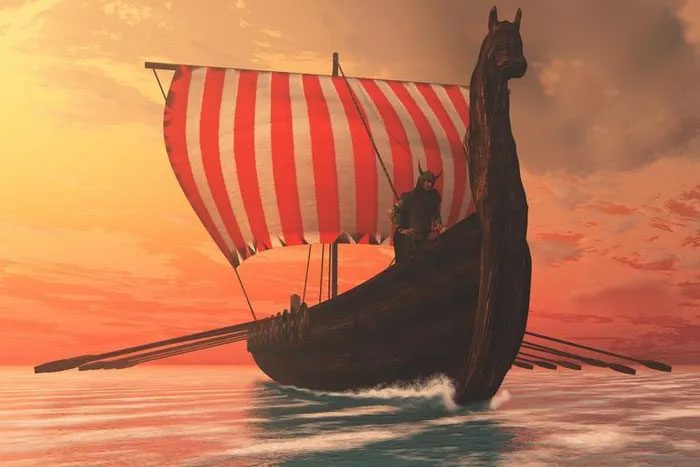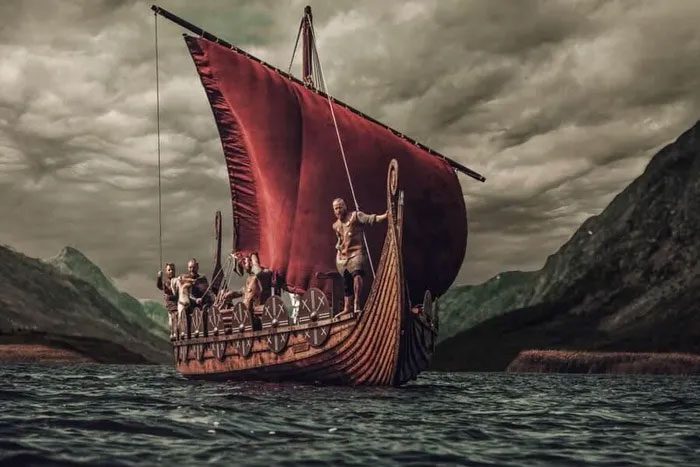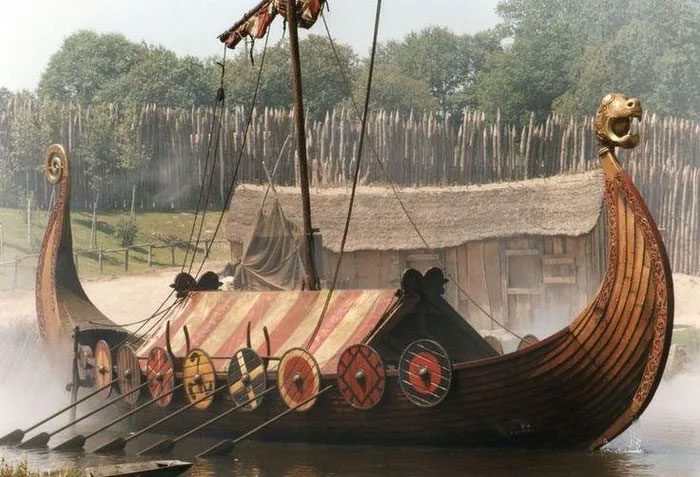Unlike many civilizations, Viking warriors built their warships with very little of the hull submerged. Thanks to this feature, their ships could move swiftly through shallow waters, allowing them to penetrate deep into enemy territory.
The Vikings were a group of people who lived in Northern Europe, specifically in present-day Denmark, Sweden, Norway, and Iceland. These Viking warriors were renowned for their combat skills, bravery, and even ferocity during numerous raids and attacks across various regions of Europe, stretching from North to South and from West to East, during the period from 793 to 1066 (known as the Viking Age).



The Viking warship (Longship) is the pride of the Viking warriors.
A significant contributor to the victories of the Vikings was their unique warships. They constructed large warships with various designs and sizes. Notably, Viking ships could navigate easily through treacherous Northern European waters as well as narrow, shallow rivers to advance deep into enemy territory.
The Viking Warship (Longship) is a source of pride for Viking warriors. According to experts, this type of ship emerged between the 9th and 13th centuries. This was a period when the Vikings actively explored and invaded Europe.
The Vikings felled large oak trees to build Longships that were over 10 meters long.
The hull of the Longship was designed to be minimally submerged. This feature allowed the warship to move quickly through shallow waters, enabling it to penetrate deep into enemy territory.
The speed advantage of the Longship contributed to the Viking warriors’ ability to conduct bold, surprise attacks. Additionally, Viking Longships were incredibly sturdy, allowing for long sea voyages.
The ship was also equipped with a large sail supported by a wooden structure known as the keelson. This helped distribute the weight of the mast and tension the sail. As a result, the ship could navigate smoothly on both the sea and rivers.





















































